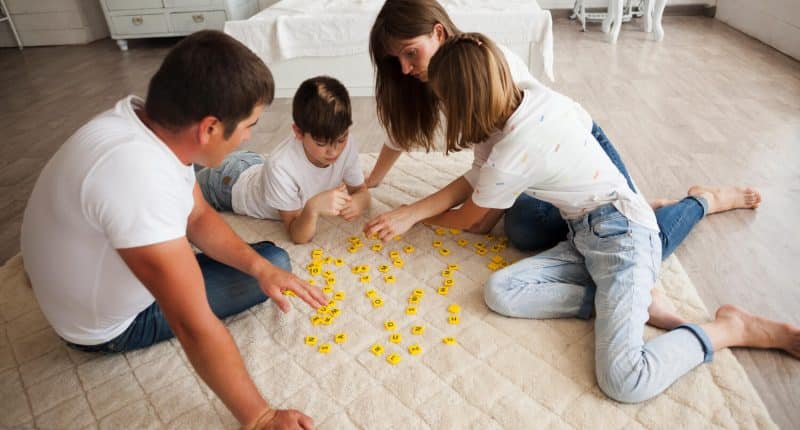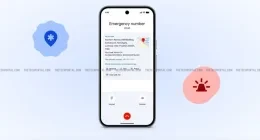Most people played a word scramble game at some point, as they are a great way to pass the time. Coming up with difficult-to-find words in an instant is fun and rewarding, but that isn’t always the case. Sometimes you caught yourself in a mental blind spot and you just can’t unscramble words for some reason. So what do you do? With a little thinking work and a strategic approach, you’ll be on your way to unscrambling words like a seasonal vet in no time. So stay tuned for some pro tips and tricks that you can quickly utilize inside your head and come up dominating on your very next Scramble game!
*A picture of a simple Scramble game*
Recognize Word Fragments and Smaller Words
One of the methods you can use to get better at understanding unscrambling words is to learn how to recognize word fragments and smaller words you can build off of.
*Maybe a picture of said example with letters detached from the scramble – A short visual presentation of how the work fragment is supposed to look*
For example: Let’s take a look at ULNHAGLI. At first, it seems like an awkward phrase but it does contain a couple of word fragments which we can use in order to build up a proper word. Mainly, letter combinations such as “HA” and “LI”
It’s a good way to use these fragments as a starting block for a word, and in this case, we get:
HAuling
LIngual
The general rule of thumb would be to look out for common prefixes and suffixes.
Prefixes – usually occur at the start of the word
Suffixes – commonly can be found at the end of a word
Here are some popular English prefixes as well as suffixes:
Prefixes
a-, acro-, allo-, an-, ante-, anti-, auto-, bi- , co-, contra-, counter-, de-, di- , dis-, down-, dys-, epi-, extra-, hemi-, hexa-, hyper-, hypo-, ig-, il-, im-, in-,infra-,inter-,intra-,ir-,macro-,mal-,maxi-,meso-,micro-,mid-,mini-,mono-,multi-,non-,octo-,over-,pan-,para-,penta-,per-,peri-,poly-,post-,pre-,pro-,proto-,pseudo-,quadri-,quasi-,re-,self-,semi-,sub-,super-,supra-,tetra-,trans-,tri-,ultra-,un-,under-,up-,xeno-
Suffixes
s (makes anything plural), en, ed, ing, er, est, ation, sion, cian, ess, ness, al, ary, ment, able, ly, ful, ize, ate, ology, able, ible, hood, ism
From a statistical point of view, removing characters associated with a prefix or suffix from the stack can reduce the number of possible combinations for which the remaining characters can be sorted. In the field of mathematics, this is called permutations (all possible arrangements). The number of possible permutations increases by orders of magnitude with the number of letters in a word (there are far more ways to rearrange six letters into unique sequences than there are four). So even some characters can be removed by grouping them into prefixes or suffixes, making words easier to decipher in your head by reducing the number of possible solutions. Once you have reduced, you can play around with the remaining letters and use elimination to guess which sequence will unscramble the word.
If you succeeded in finding a proper suffix or prefix, try to remove it and see what you can make with your remaining letters.
In addition to helping you decipher words, learning common roots can also help expand your vocabulary. Even if you don’t know what a particular word means, you can often make a good guess by looking at the root of the word and the common prefixes/suffixes it contains. If you are still having a hard time finding relevant words, there are always tools that can help you unscramble words and make sure you are on the right track.
Search for Vowels and Consonants
Another useful method is to look at the vowels of the word and use that to build a framework for other letters. Why are vowels useful? Because every syllable must contain at least one, frequently in the center of the syllable, and the remaining letters often fall into common patterns you will recognize by experience. In addition to the usual suspects (A, E, I, O, U). Most English words and syllables (important parts of words) are made up of vowels with consonants on one or both sides. Therefore, if there are few vowels or fewer vowels than consonants, there are very few ways to combine words. Put some consonants in the template, put the vowels in the middle, and try to move the letters around.
You will also begin to see some common patterns. For example, “consonant-vowel – consonant-vowel ” as this combination makes up a big case of four-letter words in the English language.
Here is another tip when you are looking for vowels.
Look for common two-letter consonant pairs like “th”. Example: BTHO can be converted to B O T H.
The letter S has two functions, so it’s a bit tricky. Whenever we see an S, we can use it to form a syllable within the word it forms, or add it to the end of the last word to make it plural. This is one reason why the letter S is usually the most useful letter in Scrabble.
As an example of how this method works, given the word Scramble VAEWS, it recognizes the “VE” pattern. After rearranging the characters, we get _VE_. When building the rest of the word, the first letter we write is A (before V, the most logical way to keep the consonants of a word): _AVE_. Test the rest by placing them within the remaining two spaces. By swapping the letters around we finally get WAVES a word we are familiar with.
Another trick we can use to construct words is by placing one of the vowels of the word in the 2nd position of the unscrambled word and test other consonants around it.
A simple case for the last example is how we can pick the letter A or E and put other letters before and after it. This leads to possible combinations of choices of SAV, VAS, WAV and VAW
Summary
A common theme in all these tips and tricks is to use your knowledge of the English language to simplify the problem in order to reduce the number of ways to decipher the words.
This is achieved by:
- Seeing a particular letter pattern
- Remove characters that match common sequences from a larger set – use roots, suffixes and prefixes, and see what letters remain and what you can do with them (with fewer letters around you are increasing your chances of spotting a familiar pattern)
We hope you found this quick guide useful and are now more prepared to crush your next Scramble game. Head out to Scrabble or Word with Friends if you are looking out to test out your newly acquired skills. Good luck and have fun!






